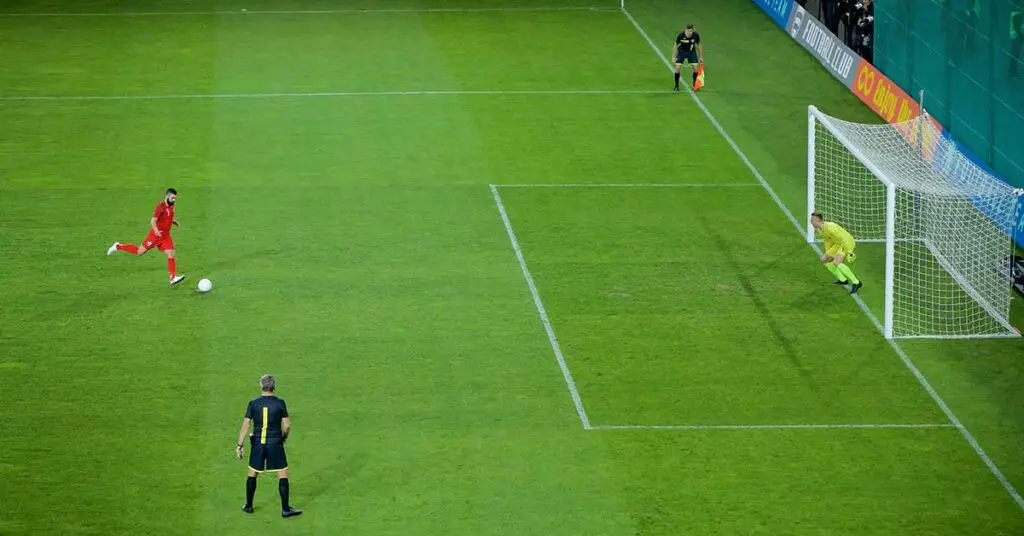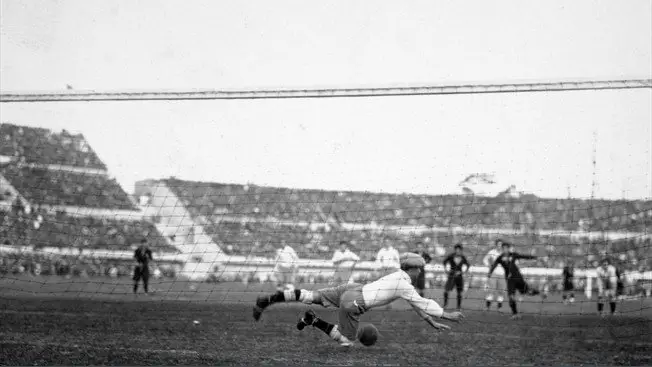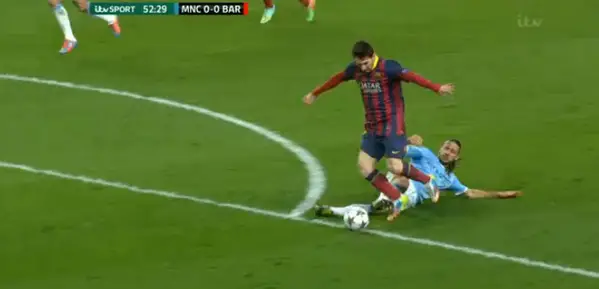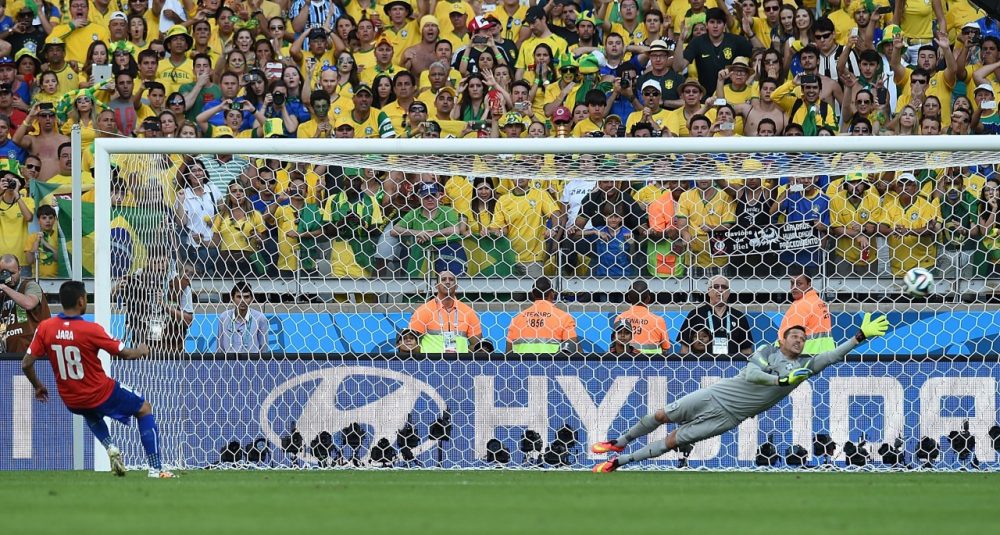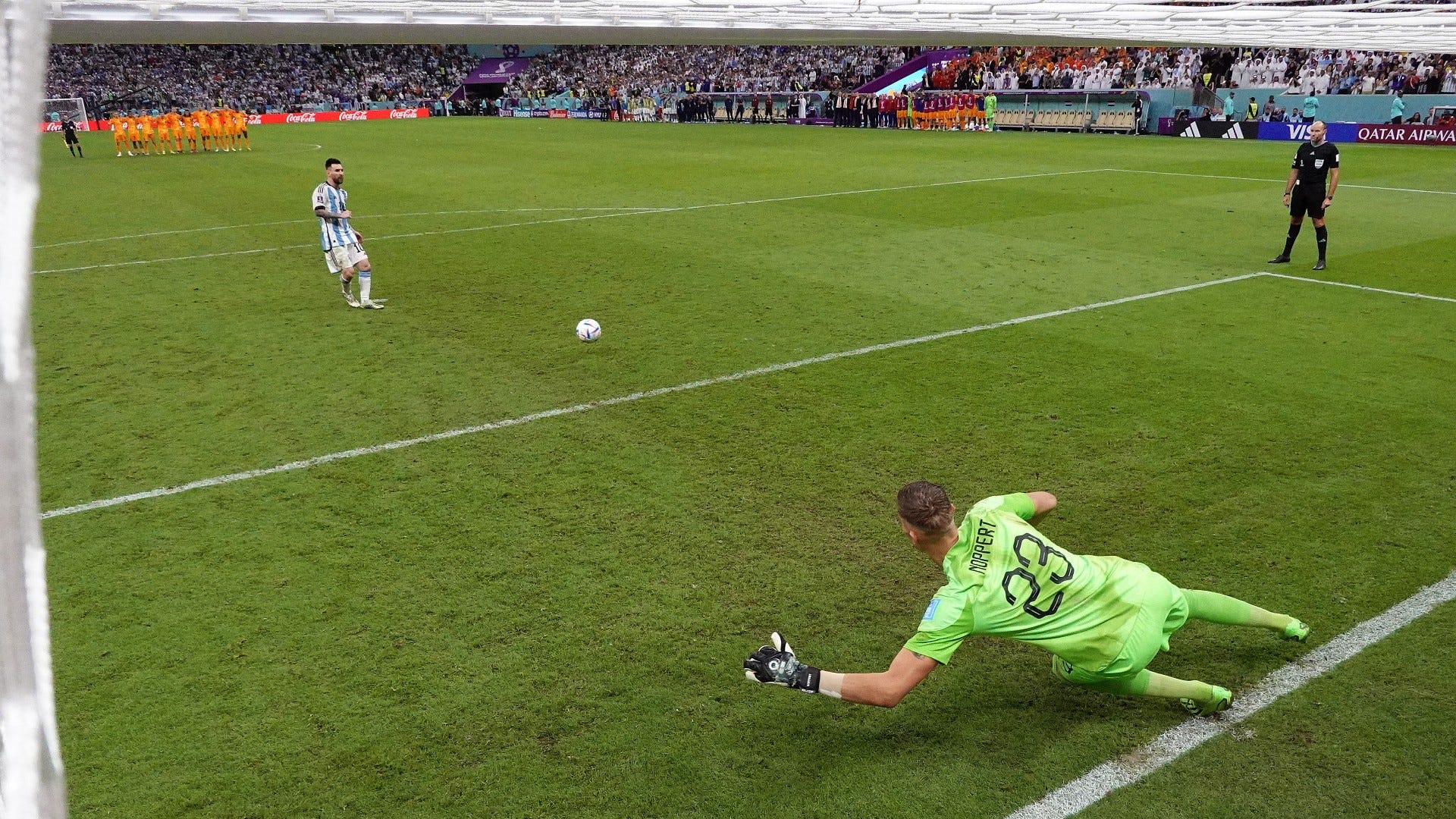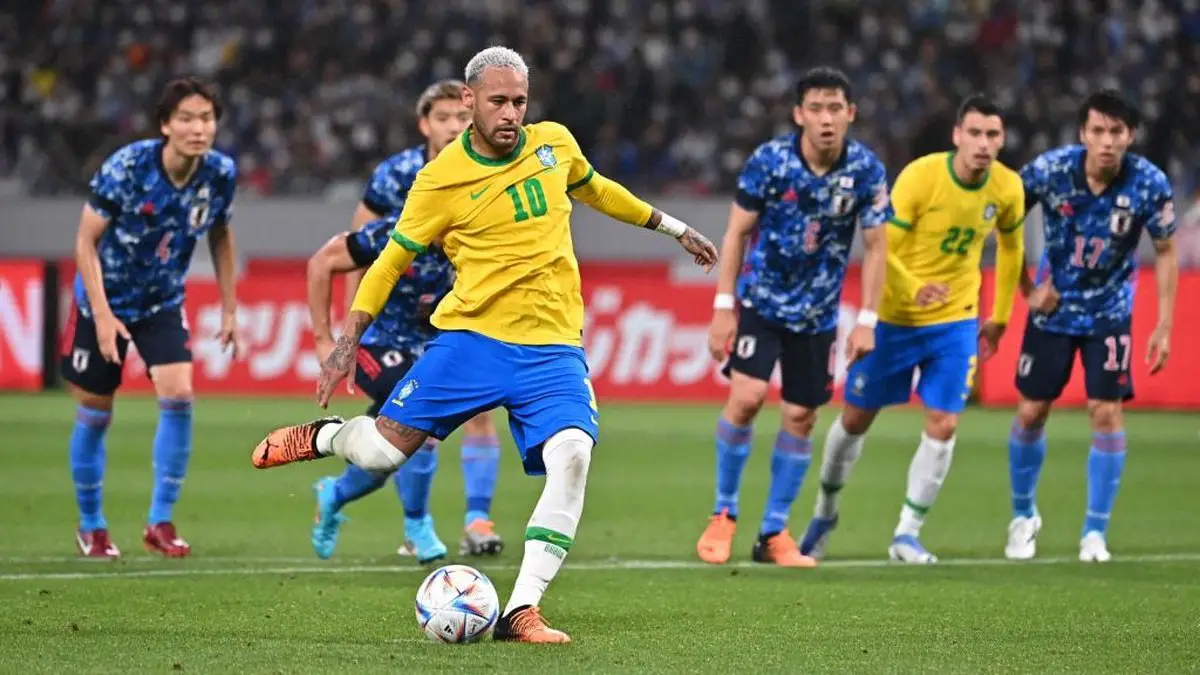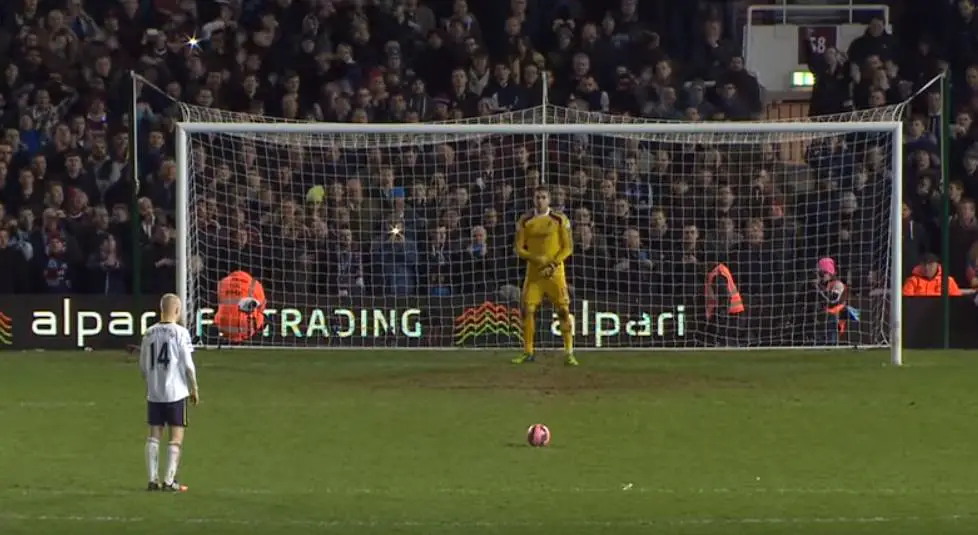Penalty kicks can be decisive and make or break a team’s chances of victory. Those few intense minutes of deliberation and anticipation after the penalty is given can be both thrilling and nerve-wracking for all parties involved—fans, coaches, staff, and players alike.
Often in these moments, it can feel cruel that a game can be decided on such harsh terms. So why are they still so integral to Football? And what is a Penalty Kick anyway?
When a team commits a foul inside their penalty area, a penalty kick is awarded to the opposing team.
The purpose is simple. Ensure fairness in soccer by giving the attacking team an equal chance at scoring a goal without being obstructed by the defending team.
When Was the Penalty Kick First Introduced?
You might be surprised to learn that penalty kicks haven’t always been a part of football. In the early days of the sport, if a foul was committed by a player inside their own penalty area, a free kick would be awarded to the opposing team.
A man called William McCrum, who lived in County Armagh of Northern Ireland, found this practice quite unfair. And it is he who is credited as inventing the penalty kick as we know it, back in the early 1890s.
As a goalkeeper who played for a local team named Milford Everton, McCrum was well acquainted with the rules of the game.
He believed that, instead of a free kick, a penalty kick should be awarded, as a means to both discourage foul in the box and to provide a chance to score befitting of the chance that was unfairly denied in open play.
According to him, the ball should be placed at a distance of 12 yards from the goal and the goalkeeper should not be allowed to move before the ball is kicked by the oppossing player. This was to increase the odds in the attacker’s favour to combat what was often the denial of a clear chance on goal
In 1891, McCrum’s proposal was adopted and formalized by the International Football Association Board (IFAB).
Later that same year, the first penalty kick was taken at an official soccer match between Accrington Stanley and Wolverhampton Wanderers. Over time, the penalty kick became a regular fixture to resolve foul play in dangerous areas.
You might have noticed that the penalty kick rules in soccer were quite different back in the late 1800s as compared to now.
Now, the penalty kicker is permitted to run up and kick the ball, which was not allowed before. In the early days, a player had to take the shot from a stationary position making it much harder to generate power in the strike.
What Causes A Penalty Kick In Soccer?
Penalty kicks are awarded to a player when their opponent team makes a foul within the penalty area.
This area is a region marked on the pitch, extending 16.5 meters from each goalpost (that’s about 18 yards). The decision to award a penalty kick rests on the referee; as such, the decision for a penalty kick is oftentimes controversial.
The following events count as fouls, and will typically result in the awarding of a penalty kick:
- Any non-goalkeeper player touching the ball with an arm or a hand
- Holding an opponent in order to limit their movement
- Reckless behavior, such as jumping, charging, pushing, challenging, kicking, or striking a player
- Late tackled, whether legitimate attempt to win the ball or not
- Throwing an object at the ball, an official, or an opponent.
The Rules of a Penalty Kick
As you know, during a penalty kick the ball must be placed at a distance of 12 yards from the goal.
Although penalty kicks might seem like a simple matter to seasoned soccer enthusiasts, they can be a bit difficult to understand for some people.
One of the reasons for this is the many rules governing a penalty kick:
- The penalty taker must be clearly identified to the referee. No other player may then take the penalty kick.
- The penalty area is vacated by everyone other than the kicker and the goalkeeper. The non-kicker players then stand behind the penalty spot, a minimum of 9.15 meters away.
- When a penalty shoot-out is occurring (which happens to break the tie of a cup match ending in a draw), all players must stay inside the central circle, which is in the middle of the pitch.
- The goalkeeper is not permitted to move from the goal line until the penalty kick has been taken.
- The penalty kicker is not permitted to kick the ball a second time unless another player has already touched it.
- When placed on the penalty spot, the ball must be completely stationary before being kicked.
- The only direction the ball is allowed to move in is forward.
Penalty Kicks vs Penalty Shootouts
Penalty shootouts, made up of five penalties each, are used when an even match needs a tiebreaker. They are perhaps the most emotionally charged moments in football.
Seen in knockout competitions, like the Champions League or FIFA World Cup, Penalty shoot outs are every football fan’s worst nightmare. In contrast, penalty kicks are a part of regular football gameplay, but can be just as devastating in isolation.
Whilst a penalty kick is taken by a singular player, during penalty shootouts players from each team take turns scoring goals from the penalty spot.
If the two sides are still drawing on the number of penalties scored after taking 5 each, sudden death is entered in which both teams continue to take a penalty each until one is able to score without the other scoring in response.
This can sometimes result in ridiculously long shootouts, where the entire team, including the goal keepers, have to take a penalty each. If the shoot out is still tied after the keepers have taken penalties, the order resets, and the first choice steps up a second time, and then the second choice and so on until eventually a winner is found.
The main difference between a penalty that occurs during a match and a penalty shoot out, is that after the penalty taker takes their shot, they are not allowed to touch it again. The essential difference this makes, is the keeper doesn’t have to worry about rebounds. Simply making the save is enough, so long as the ball isn’t over the goal line.
The ABBA Shootout Format
Previously, the format used for penalty shootouts was ABAB. With this format, Team A would take the first penalty kick, followed by Team B, and so on and so forth until all the players of each team had taken a penalty kick.
However, in 2017, concerns were raised that the ABAB format was unfair to the second team, or Team B. For the team taking the second penalty kick, there was always extra pressure.
With the new format of ABBA, the predictability of the shootout was lessened. It is also thought that this shootout format reduces Team A’s psychological advantage.
Despite answering a lot of the criticisms levied at penalty shoot outs the ABBA format was scrapped only a year after it was introduced. The traditional ABAB format was reinstated.
Should the Best Player Take the First or Fifth Penalty?
A penalty shootout, as we know, involves penalty kicks to determine the winner, with the initial 5 often deciding the outcome. A common and controversial topic of debate in soccer is this: should the attacking team’s best player be used during the first penalty, or the fifth and last one?
Naturally, we can guess that when the best player goes first, the chances of a good start is higher. This in turn can have a motivational effect on the rest of the team and result in the shootout going much more smoothly.
That said, some argue that it’s best to put the best player in high pressure situations where scoring matters the most. If they are saved for the 5th penalty, their team might be depending on them to either score and keep them in the shootout for sudden death, or to score and win the tie there and then.
It’s a tricky dilemma without a definitive answer. If you save your best taker last and lose before they get to take a penalty, the manager looks like an idiot. If you use them first and then have to rely on a less confident player to take a high pressure 5th penalty, the manager also looks like an idiot.
Best Place to Aim a Penalty
Before we go into details, here are some key facts that will help you choose the best place to aim a penalty.
- Research shows Goalkeepers are inclined to dive left or right during penalties
- The participants in a study dived right 55% of the time compared with 42% to the left
- There’s a 78% chance that the penalty taker will score
- Top corners can be really difficult for the GK to stop, but the risk of missing the target is higher
- Lower zone shots are easier to predict
- Deception can be vital to maximizing the chances of scoring a goal
For all footballers, professional or amateur, one of the most important things to learn is the best place to aim a penalty.
Through training and experience, many players try to predict the goalkeeper’s movements as their primary tactic. Seasoned players are able to guess where the goalkeeper might dive, and then aim their kick in the opposite direction.
While some players might prefer their left foot, others might shoot with their right.
Most players, when starting out, like to place their penalty at a low angle, to the sides of the goal. That’s because it’s a safe option, especially against inexperienced goalkeepers.
It’s also very important for the player to take a moment to relax and calm themselves before executing a penalty shot. Being confident can make a world of difference —
Just think about Messi’s winning penalty during the FIFA World Cup 2022 finals. His movement is smooth and composed, almost as if he was taking a penalty in his back garden!
The most important part of building composure in such situations is feeling confident in your own ability. To achieve this, there’s only one tried and tested method. Practice.
